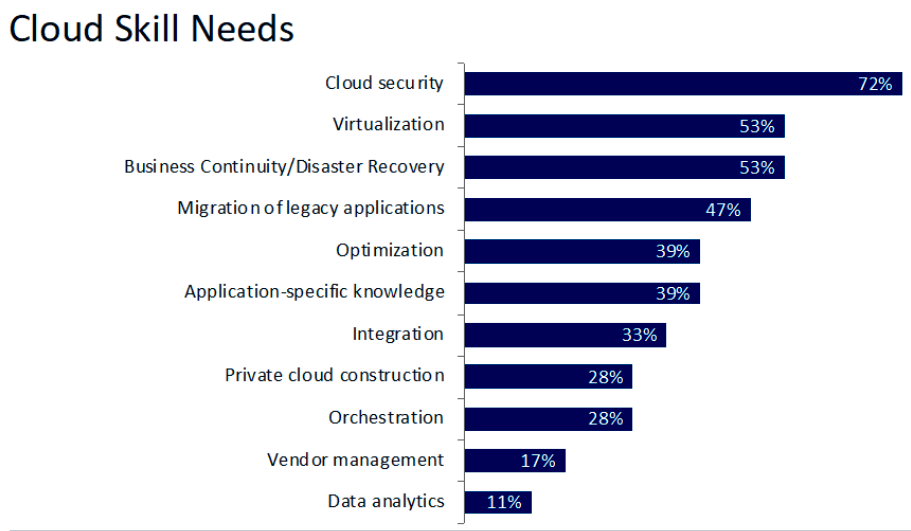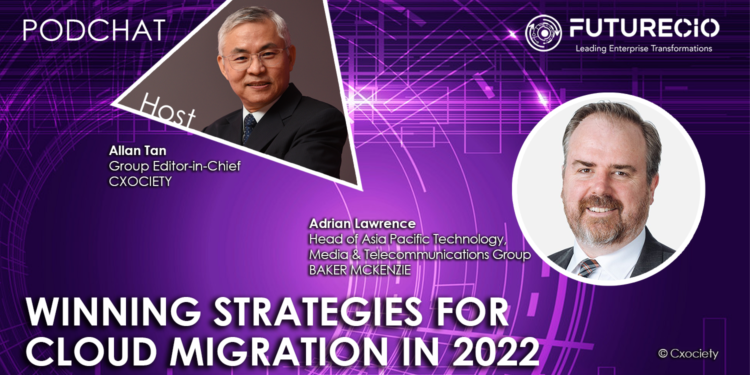One of the outcomes of the pandemic is the accelerated adoption of cloud computing. But whereas cloud was first thought of as a mid to long-term strategy that will take organisations time to adapt – because organisations in Asia have a lot of legacy systems that are simply too complicated to move – statewide restrictions on mobility have forced companies to move up a notch their cloud strategies.
And as the dust settles and businesses and people get accustomed to the new way of working, cloud computing is evolving from technology enabler to business disruptor.
But to achieve this new status of business disruptor, IT leaders responsible for cloud strategy must understand their organisation’s business strategy first, and then seek opportunities to leverage new and emerging cloud capabilities to accelerate that strategy.

Asked what key challenges organisations must straddle in migrating to a public platform, Adrian Lawrence, head of Baker McKenzie's Asia Pacific Technology, Media & Telecommunications Group, says from a legal perspective, the first is the regulatory regime, privacy in particular.
“We have to think about data being held in different jurisdictions and how complicated it is. Second is cybersecurity which is often a driver for companies to move to the cloud, to get the benefit of increased security. But it is not just about the data, it is how the organisations then interact with that data. The third is the willingness of organisations to do things differently as they move to the cloud,” he adds.
Facilitating cloud migration
According to Accenture, COVID-19 has created a new inflexion point that requires every company to dramatically accelerate their cloud migration to create a foundation for end-to-end digital transformation, requiring that every business become a cloud business.
Lawrence reckons it depends on what is the actual driver for the move to the cloud. He suggested that advanced technologies like data mining and artificial intelligence are for better storage of data and increased functionality for remote access.
“You also have software for accounting, HR, or customer relationship management (CRM) systems. There may be outsourced arrangements or different actors to interact together to get to an efficient transition to a cloud environment,” he continues.
Critical skills
Boston Consulting Group (BCG) says there is a strong shift towards cloud technologies in Asia-Pacific. Overall cloud spending is expected to reach US$200 billion in the region by 2024, with investment into cloud growing at a compound annual growth rate (CAGR) of over 20% since 2018.

The consultant expects this trend to continue, with a strong shift towards the cloud across all layers of the technology stack. Naturally, such an increase in demand will necessitate a corresponding increase in skills.
In this regard, Lawrence concurs adding that there is significant work that needs to be done. He suggests having a clear interaction system to understand the transition and a clear view of the regulatory concerns that might come up.
“In particular with the specialist team of the underlying software that is being deployed, ask questions like “Is this a team I can work with, that I can trust, that I feel is giving me prime service over the course of this transaction?” he continues.
Considerations for cloud DR – a legal perspective

Anyone migrating to the cloud will at one point ask about disaster recovery, or as Chris Morris, IDC’s VP cloud, datacentre and partner ecosystem research for Asia-Pacific, told FutureCIO the focus isn’t really on disaster recovery (DR) perse but business continuity (BC).
The cloud is a natural next step for organisations looking to take advantage of the promises of cloud computing, particularly scalability, flexibility and potentially debating disaster recoverability.
Lawrence says is it about making sure your service is going to be continuously provided in the case of downtime or disaster. He posits several considerations CIOs and heads of infrastructure must ask or answer as part of due diligence.
“Do we have adequate coverage considering the kinds of disasters that might occur? Do we have in place the processes that can be easily triggered if and when a disaster might occur? Making sure all of this is in place and set out in your agreement with your service provider is really at the core of a good DR strategy from a legal perspective,” he continues.
What’s my ROI?
Depending on whom you ask there remains a healthy debate on whether it is possible to achieve a return on investment (ROI) with a cloud strategy.

Moti Rafalin, CEO and co-founder of vFunction, argues it is not a simple process. It starts with evaluating the why to new technology (cloud) and understanding the benefits the business hopes to achieve.
For his part, Lawrence recommends asking the purpose of the migration. What is the organisation trying to achieve?
“Sometimes you have a set of metrics in a contract that does not necessarily align with the underlying purposes for the cloud migration so think very carefully about what they might be. I do not think there is a one-size-fits-all. You will always kind of seek metrics as you are going into a transformational project like this."
Adrian Lawrence
Click on the PodChat player to get Lawrence’s perspective on winning strategies for cloud migration in 2022 – from a legal perspective.
1. What are the three most common challenges faced by organisations considering migrating to (a) private cloud and (b) public cloud?
2. What critical technologies must be in place to facilitate cloud migration?
3. What critical skills or experiences or credentials must CIOs look for when considering bringing in external companies to help with the migration?
4. When considering a cloud-based DR strategy, what should CIOs remember?
5. What is a realistic set of ROI metrics for cloud migration?





